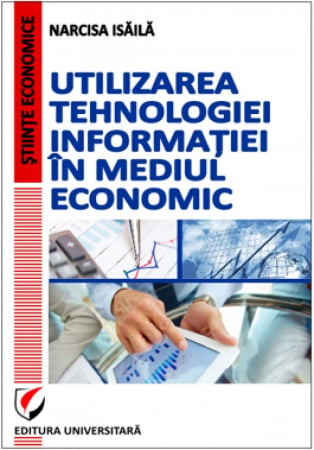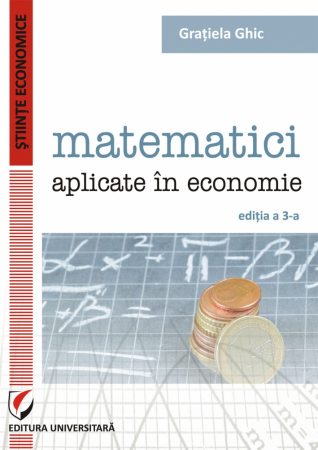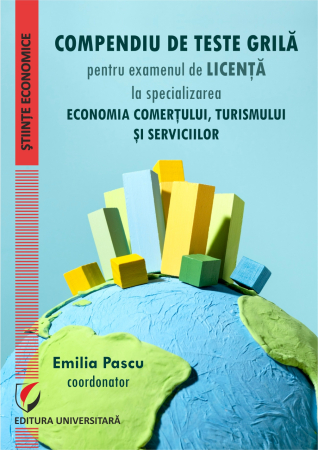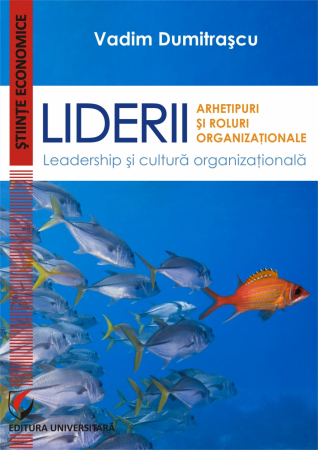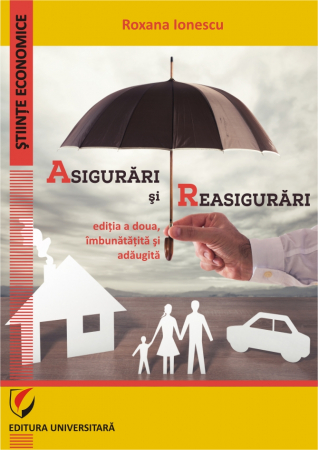ISBN: 978-606-28-0203-5
DOI: 10.5682/9786062802035
Publisher year: 2015
Edition: I
Pages: 200
Publisher: Editura Universitară
Author: Emilia Pascu
- Description
- Download (1)
- Authors
- Content
- More details
- Reviews (0)
Currently, the position that CRM is a business strategy, being not limited to one of the functions of the organization, is being asserted more and more strongly. At the same time, it should be noted that IT solutions support the fulfillment of objectives in the field of customer relations and do not represent the essence of CRM. To ensure the effective and efficient fulfillment of these objectives, organizations must harmonize the three levels of CRM: strategic, operational and analytical, managing a multitude of facets, from designing strategies, to automating sales, service, marketing and communication activities, until the analysis of the information and the measurement of the organization's performances in the relations with the clients.
Today we are witnessing the orientation of more and more organizations towards the development of profitable and long-term relationships with customers, as a way to ensure sustainable development and increase market competitiveness. The emergence as a distinct field of customer relationship management (CRM) is based on the creation and development of personalized relationships with customers in order to increase the profitability of companies.
Customer relationship management aims at the strategic management of customer relations (one of the most important categories of "stakeholders"), based on the use of information technology.
Compared to previous decades, today customers are "moving targets" for organizations. The markets no longer have a relatively stable structure, being extremely dynamic, with segments and niches whose profile evolves. In this context, Customer Relationship Management aims to attract and retain profitable customers, through the development of long-term relationships and by stimulating customer loyalty, allowing companies to understand customers, to "isolate" the most good customer (we want to have a long-term relationship with him), to create a mutually beneficial long-term relationship with them.
Advances in information technology contribute to the substantiation of the most appropriate strategies for developing relationships with each client in the organization's portfolio.
-
Aspecte teoretice privind imbunatatirea relatiilor cu clientii
Download
He holds a PhD in Economics and holds, within the Faculty of Tourism and Commercial Management from the Dimitrie Cantemir Christian University, Bucharest, the disciplines Fundamentals of Commodity Science, Food Commodity and Consumer Safety and Commodity Design and Aesthetics. The author's scientific activity is materialized in titles such as: Goods expertise, Goods design and aesthetics, Customer relationship management, Food goods and consumer safety, etc. as an author and co-author, as well as numerous articles and other studies, covering the scope of quality products and services with an emphasis on consumer safety and creating a long-term relationship with customers.
INTRODUCTION / 7
Chapter 1 - CLIENTS - THE TRUE CAPITAL OF THE ORGANIZATION / 10
1.1. Customer definition / 11
1.2. Types of customers / 15
1.3. Customer identification / 23
1.4. Desires, needs and expectations of customers / 24
1.5. Customer satisfaction level / 28
Chapter 2 - STRENGTHENING CUSTOMER RELATIONS THROUGH COMMUNICATION / 38
2.1. Defining communication / 40
2.2. The communication process / 41
2.3. Components of the communication process / 43
2.4. Types of communication / 44
2.5. Communication within the company / 47
2.6. The Internet - means of communication / 52
Chapter 3 - ASPECTS REGARDING CUSTOMERS 'PURCHASING BEHAVIOR / 55
3.1. Stages of the purchasing decision process / 55
3.2. The purchasing decision process. Structure and typology of purchasing decisions / 64
3.3. Directly observable influences on the client / 71
3.4. Endogenous influences on the actual behavior of the client / 76
3.5. Exogenous influences on customer behavior / 78
3.6. The influence of the increase of the clients' exigencies on their own buying behavior / 81
3.7. Customer loyalty and resulting effects / 82
Chapter 4. CUSTOMER RELATIONS MANAGEMENT - A TOOL FOR SUCCESS / 86
4.1. The emergence of customer relationship management / 87
4.2. Defining Customer Relationship Management (CRM) / 91
4.3. Customer Relationship Management Objectives / 96
4.4. Customer Relationship Management Strategy / 102
4.5. Investment in CRM / 105
4.6. Advantages of CRM implementation for organizations / 108
4.7. Quantifying customer relations / 111
Chapter 5. COMPLAINTS MANAGEMENT / 116
5.1. General presentation / 117
5.2. Principles of handling complaints / 123
5.3. Stages of the complaint handling process / 128
5.4. Complaints management performance / 134
Chapter 6. ETHICAL RELATIONS WITH CUSTOMERS / 139
6.1. Ethical principles used in business / 141
6.2. Attributes of the observance of the ethical standards by the personnel of the organization / 145
6.3. Values and countervalues in ethics / 155
6.4. Ethics within the organization / 159
GRID TESTS / 167
BIBLIOGRAPHY / 194
Some time ago, meeting customer needs was just a premise of effective marketing. Because customers move easily from one manufacturer to another, it has become imperative to retain them through specific actions and programs, consisting in offering advantages (promotional offers, price reductions, loyalty cards, etc.). At present, however, more and more strategies are required that determine the enthusiasm of customers. Enthusiasm can be determined by personalized offers, resulting in its spread in customer reference groups, at the center of any company's strategy being mandatory to find the customer.
The economy of the present and certainly that of the following years, implies strong and lasting relationships with customers, the way they manage with the help of new information technologies being a major element of increasing the competitiveness of companies.
The 1990s marked the transition from transactional marketing to relational marketing. Thus, the orientation focused on achieving as many short-term transactions as possible began to be gradually replaced by the philosophy of promoting medium and long-term relationships, with all categories of people and organizations that have a direct or indirect interest in the organization ( “Stakeholders”). Naturally, the assertion of relational marketing, both conceptually and operationally, has determined the reconsideration of customer relations, a major category of "stakeholders" and a successful management involves action orientation, continuous contact with customers, orientation to key businesses and great value.
Customer relationship management (a concept established in the literature and business practice under the name CRM - Customer Relationship Management) has become, in the development of information technology, a field of maximum interest for all companies. In all sectors of activity, important sums are allocated for the creation of efficient customer management infrastructures.
Currently, the position according to which CRM is a business strategy, being not limited to one of the functions of the organization, is being asserted more and more strongly. At the same time, it should be noted that IT solutions support the fulfillment of objectives in the field of customer relations and do not represent the essence of CRM. To ensure the effective and efficient fulfillment of these objectives, organizations must harmonize the three levels of CRM: strategic, operational and analytical, managing a multitude of facets, from strategy design, to automation of sales, service, marketing and communication activities, until the analysis of the information and the measurement of the organization's performances in the relations with the clients.
Today we are witnessing the orientation of more and more organizations towards the development of profitable and long-term relationships with customers, as a way to ensure sustainable development and increase market competitiveness. The emergence as a distinct field of customer relationship management (CRM) is based on the creation and development of personalized relationships with customers in order to increase the profitability of companies.
Customer relationship management aims at the strategic management of customer relations (one of the most important categories of "stakeholders"), based on the use of information technology.
Compared to previous decades, today customers are "moving targets" for organizations. The markets no longer have a relatively stable structure, being extremely dynamic, with segments and niches whose profile evolves. In this context, Customer Relationship Management aims to attract and retain profitable customers, through the development of long-term relationships and by stimulating customer loyalty, allowing companies to understand customers, to "isolate" the most good customer (we want to have a long-term relationship with him), to create a mutually beneficial long-term relationship with them.
Advances in information technology contribute to the substantiation of the most appropriate strategies for developing relationships with each client in the organization's portfolio.

6359.png)
![Theoretical Aspects for Improving Customer Relations [1] Theoretical Aspects for Improving Customer Relations [1]](https://gomagcdn.ro/domains/editurauniversitara.ro/files/product/large/aspecte-teoretice-privind-imbunatatirea-relatiilor-cu-clientii-822-692873.jpg)

